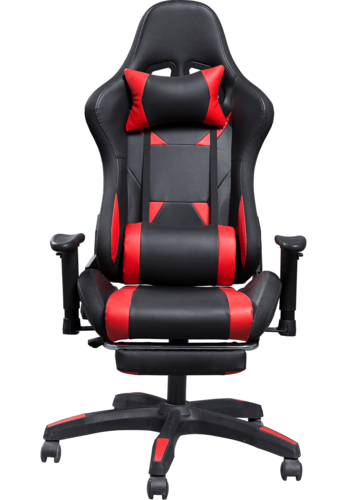Incorporating audio or vibration systems into high back gaming chairs can significantly enhance the gaming experience. However, this integration also comes with certain trade-offs in terms of cost, complexity, and comfort. Here's a detailed look at both the potential advantages and disadvantages:
Advantages:
Immersive Experience
Built-in audio systems enhance the sound quality without the need for external speakers or headphones, offering an immersive experience with surround sound capabilities. This creates a more engaging gaming environment, allowing players to experience sound effects, music, and in-game dialogue with better clarity and depth.
Vibration systems that sync with in-game events, such as explosions or gunfire, provide haptic feedback. This feedback can simulate real-world sensations, helping gamers to feel more connected to the game’s action.
Space-Saving Design
By integrating the audio system directly into the chair, users can eliminate the need for additional speakers or headphones, reducing clutter in the gaming area. This is particularly beneficial in small spaces or minimalist setups where external equipment might be cumbersome.
Enhanced Comfort and Convenience
The built-in systems in a high back gaming chair can make it more convenient for extended sessions. Gamers don’t need to adjust or move additional devices (like external speakers or headphones), offering a more streamlined experience.
The vibration system also adds a level of comfort by reducing the strain on the gamer’s body during long sessions, as the vibrations can simulate a physical sensation that aligns with gameplay.
Customization
Many high-end gaming chairs with built-in audio and vibration allow users to customize sound and vibration settings to suit their preferences. This customization enhances the gaming experience based on individual needs, whether it’s for audio fidelity or for specific haptic feedback intensity.
Disadvantages:
Increased Cost
Adding integrated audio or vibration systems can significantly increase the price of the gaming chair. For budget-conscious consumers, this could make the chair less accessible, particularly if the features are seen as non-essential for some users.
Complexity and Potential for Technical Issues

Incorporating technology into the chair adds more complexity to its design. There’s the potential for malfunctions, such as sound system failures or issues with the vibration mechanism. This can lead to additional costs for repair or replacement, and may not be ideal for users who prefer simplicity in their gaming setup.
Comfort vs. Technology
Some users may find that the built-in systems compromise comfort. For example, the added components, such as speakers or motors for vibration, can add extra weight or cause discomfort in the chair’s padding. The placement of speakers or vibration motors may also impact the overall ergonomic design of the chair.
Sound and Vibration Quality
Audio quality from built-in speakers in a chair might not compare to dedicated high-quality headphones or external sound systems, especially for audiophiles. Similarly, while vibration systems can enhance immersion, they may not provide the same depth or accuracy of feedback found in specialized gaming peripherals like vibration controllers.
Dependency on Power
Built-in audio and vibration systems often require an external power source, such as a battery or direct connection to a power outlet. This could limit the mobility of the chair and require users to have access to electrical outlets or maintain batteries, adding to the maintenance and logistics of the chair’s use.


 عربى
عربى Español
Español









